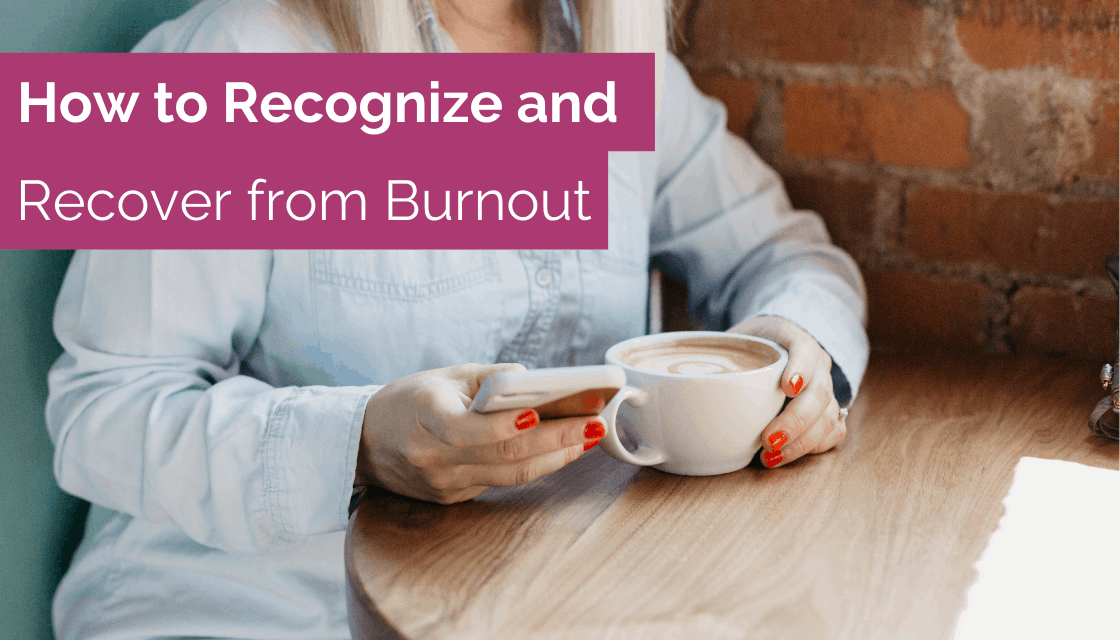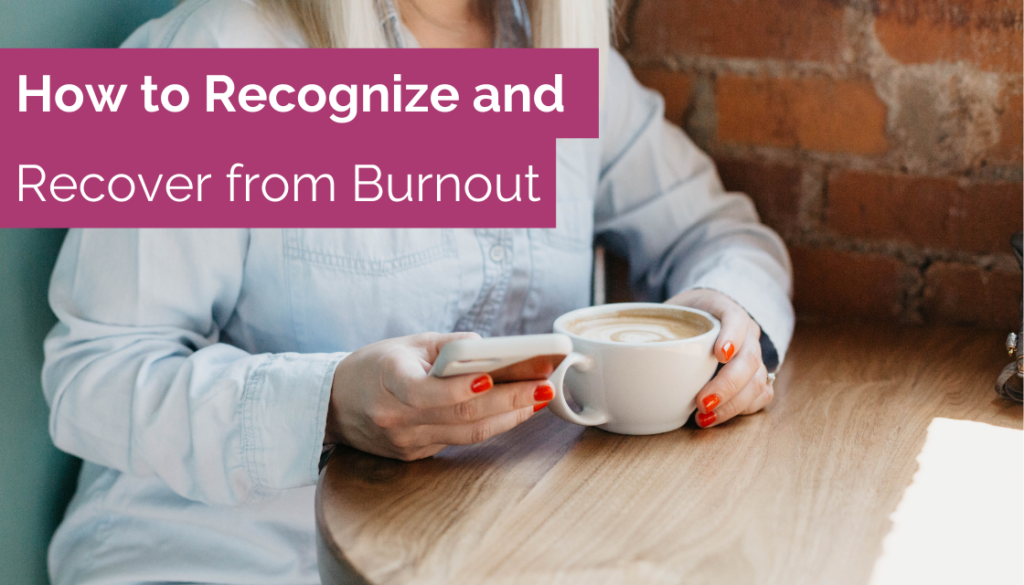
26 Feb How to Recognize and Recover from Burnout

What is Burnout?
Burnout is when you reach a state of physical and mental exhaustion because of continued exposure to high-stress situations at work, at home, or in general. It can be caused by things like:
- Constantly having inadequate resources at work
- Feeling pressure to always be a perfect, present parent
- Living through an uncertain or unprecedented social, political or economical time
Why It’s Important to Recognize It
Recognizing burnout in yourself and others is the first step in being able to treat it. By identifying that you or someone around you is experiencing burnout, you can begin the process of uncovering what is causing the burnout and how to address it.
How to Recognize Burnout
Burnout can happen to anyone, and it looks a bit different for everyone who deals with it. Common symptoms are:
Exhaustion
This kind of exhaustion is more than just being tired. It’s feeling as if you are physically, emotionally and mentally depleted to the point where all you want to do is lay in bed.
Changes in Sleep Patterns
This is a disruption in what your normal or baseline sleep pattern looks like. For example, if you are normally an early riser and you find yourself unable to get out of bed in the morning, or if you normally fall asleep easily, but now you lay awake for hours after going to bed.
Being Irritable or Overly Sensitive
Burnout can really affect how easily you lose your temper in certain situations. It can make simple, everyday tasks feel like a burden, cause you to lash out in situations where you normally wouldn’t or make you more sensitive to criticism or jokes than you normally would be.
Isolating Oneself
When you are dealing with burnout, everyday social interactions can begin to feel difficult. Choosing isolation seems like the easier alternative to being around people.
Getting Sick More Often
Burnout, like other forms of stress, can take a toll on your physical health. Headaches and stomachaches may become more common, and you might find yourself getting colds and other illnesses more easily.
Recovering from Burnout
The simplest way to address your burnout is to take a step back from whatever is causing it.
- For work burnout, you can try:
- Taking a lunch break and a couple of other small breaks during the day
- Setting strict work hours so you don’t feel like you have to be available all the time
- Taking your unused vacation days
- For at-home burnout, you can try:
- Exercising every day to release stress and endorphins, even if it’s a walk around the block or a ten-minute YouTube yoga flow
- Asking for help from your loved ones
- Eating a balanced diet filled with fruits and vegetables
- Practicing your favorite form of self-care at least once a week
- For burnout from other sources, you can try:
- Removing the source from your daily life. For instance, if you’ve found yourself glued to the news lately or constantly scrolling on social media, turn it off or set limits for when and how long you can do that activity daily
- Meditating to clear your mind
- Talking about what’s causing the burnout with a loved one or therapist
- Looking for helpful resources such as books addressing how to handle burnout, like this one
Preventing Burnout in the Future
It’s important to understand that suffering from burnout doesn’t mean that there’s something wrong with you or that you’re not tough enough to handle the stress in your life. It just means that the stress has taken over your life in a way that is negatively impacting it. Once you know what your burnout triggers are and what burnout feels like, you can recognize when it’s happening again and act more quickly to stop it from progressing.
How Artful Agenda Can Help
Artful Agenda can help you with managing your stress so that it doesn’t become burnout. Here are a few of the things our mobile, tablet and desktop app can do for you:
Schedule time for self-care
Add your self-care time to your schedule like it’s an appointment you can’t miss. You can schedule things like having quiet coffee time in the morning or having a bubble bath with wine and a book. This will help make sure you have time in your day for it and that you don’t forget to do it.
Prioritize your most important tasks
Add the tasks that are most crucial to your daily Top Priorities to make sure they get done and put everything else in the Other Tasks list. Breaking up your to-do list like this makes it seem less overwhelming.
Create Start/Stop work times
Use the reminders in Artful Agenda to set the times you want to start and stop working each day. By sticking to set times, you minimize the chance that you’ll lose your work-life balance.
Add daily breaks to your calendar
Create calendar appointments for any breaks you need or want to take during the day, like your lunch break. This lets anyone with whom you share the calendar know that you’re not available during that time and reminds you to take a break from whatever you’re working on.
Ready to start using Artful Agenda to prevent burning out in the future?



No Comments